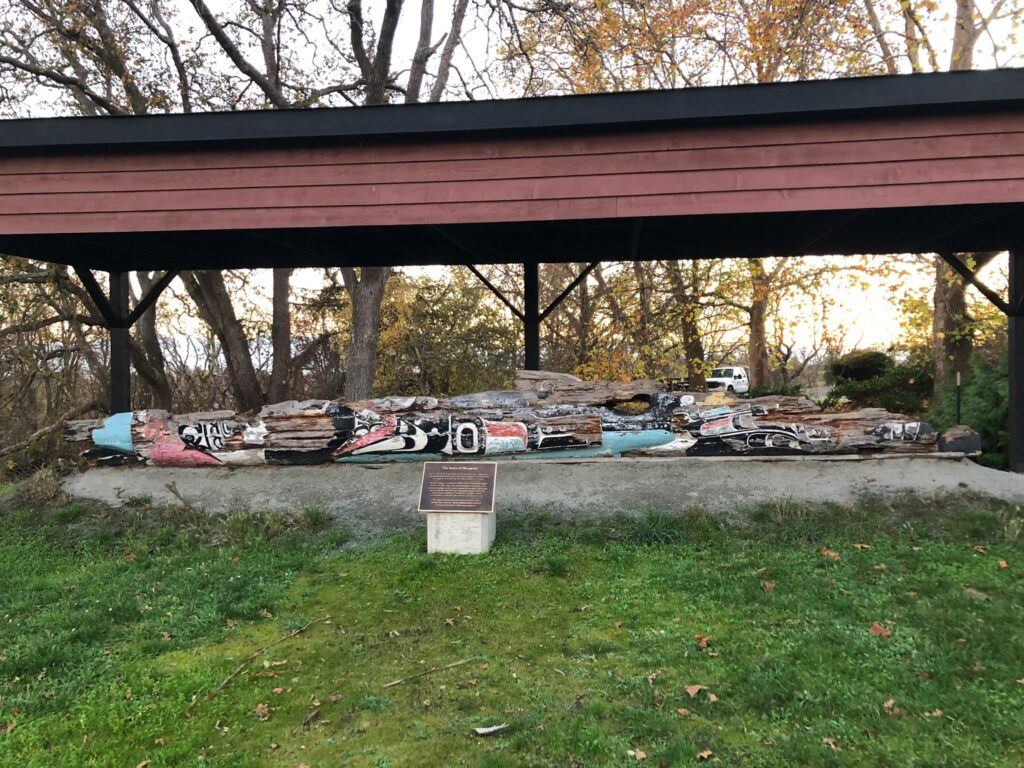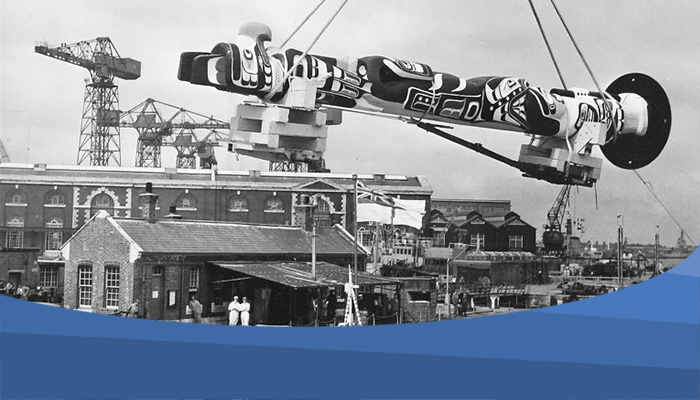Introduction to Hosaqami
Standing at 25 feet tall and weighing over two thousand tons, the Hosaqami totem pole stands on Whale Island in Portsmouth Harbour, England. From 1910 to 1960 the Royal Canadian Navy would train with the Royal Navy at the HMS Excellent. Every graduating class would give the Excellent a present. Some of these items would include fine china and silverware. Even a flaming London Taxi was paraded through Portsmouth. The graduating class of 1959 wanted to do something more. Bill Shead was part of the group that presented the totem pole. He said that “they wanted to give something that was large and hard to clean”. Chief Mungo Martin from Victoria, BC was asked to carve the totem pole.
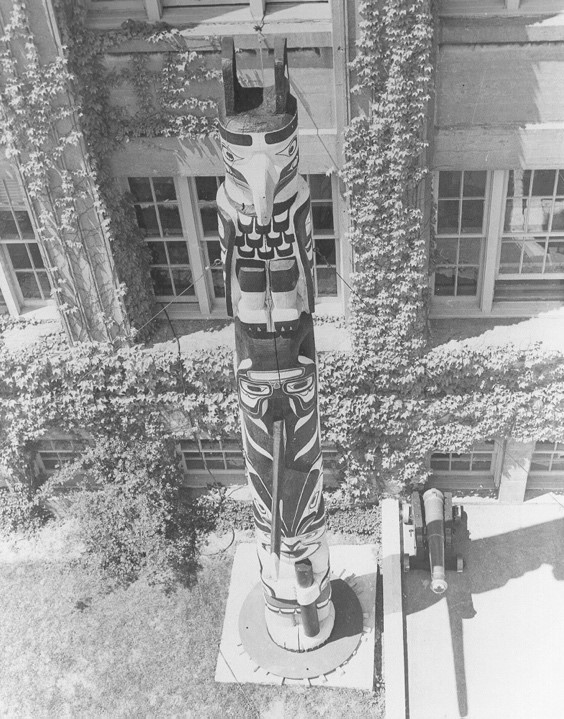
Carving Hosaqami
Chief Mungo started carving with his grandson Tony Hunt on May 1, 1959, and was finished by July 10, 1959. Hosaqami was carved out of a cedar log from the British Columbian Rain Forest. The bottom totem is the speaker, the middle totem is a killer whale or orca, and the top totem is a thunderbird (eagle). There are many different Indigenous cultures, and each animal has its myths and legends in each culture. In this totem the speaker represents the instructor, the whale represents the challenges of the sea, and the thunderbird represents skill and knowledge to overcome. It was transported to Halifax and stayed the winter in the Canadian Navy Gunnery School. On July 15, 1960, it was transported on the HMCS Kootenay to Portsmouth. There was a call for volunteers for a special escort of the Hosaqami. There was to be a ceremony at Portsmouth for the HMS Excellent. 15 Canadian Royal Navy who were also Indigenous answered the call. They became regular members of the HMCS St. Croix which was the sister ship of the Kootenay. Mid July they flew to Halifax and set sail. Bill Shead was their Sub Lieutenant.
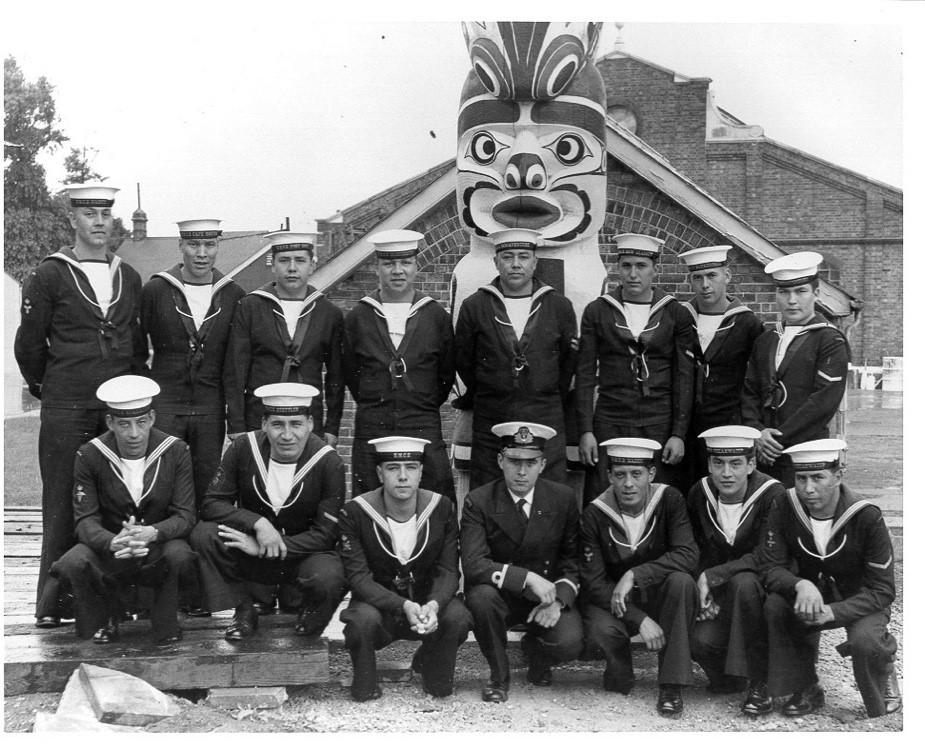
Transporting Hosaqami
The crew of the St. Croix all came from different Indigenous backgrounds, so no one really knew what the ceremony or escort was going to look like. None of the crew were from BC where the totem was carved so they were unsure of the proper ceremony that needed to be presented. There were no common traditions between all the different Indigenous cultures, and it was more than likely that the British people did not know anything about the Indigenous peoples of North America. They would have probably only known of the stereotypes from John Wayne movies. They did not want to take anything away from Hosaqami, they just wanted to add a little bit of fun to the day. So, the crew played with that idea, without being disrespectful to Chief Mungo, and while sailing carved lances (spears) out of mop handles from the ship. They decorated them with feathers from seagulls that would fly around the ship. One of the men on board, Charlie Rabbitt, carved a peace pipe as well.
Hosaqami arrived in Portsmouth on July 27, 1960, where lots of people had gathered to see. People were also on boats trying to catch a glimpse. The morning of July 28th was used to prepare for the afternoon festivities. The streets were lined with people eager to watch. Without warning the 15 members of the St. Croix ran through the streets with the lances they carved shouting war cries which a lot of people in the crowd did not particularly enjoy. After a large circle was formed around Hosaqami, Captain Dalglish, who was the Commanding Officer of the HMS Excellent, was given a headdress and a blanket to wear. The peace pipe was passed around and a circle dance was performed. They ate two barbequed pigs and drank barrels of Brickwood’s best (local ale) which was supplied by the Royal Navy, they also ate hotdogs and drank Oland’s Ale (Halifax ale) which was supplied by the Royal Canadian Navy.
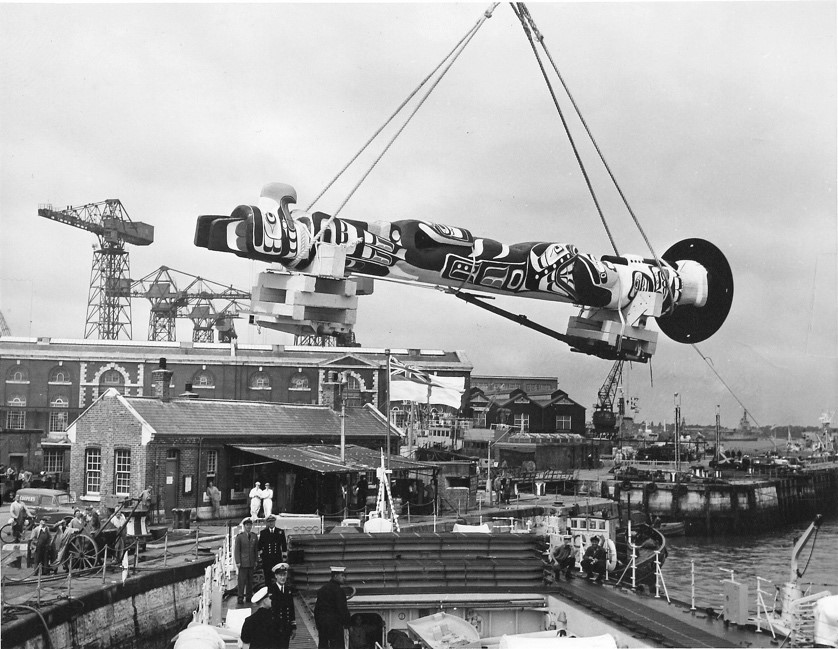
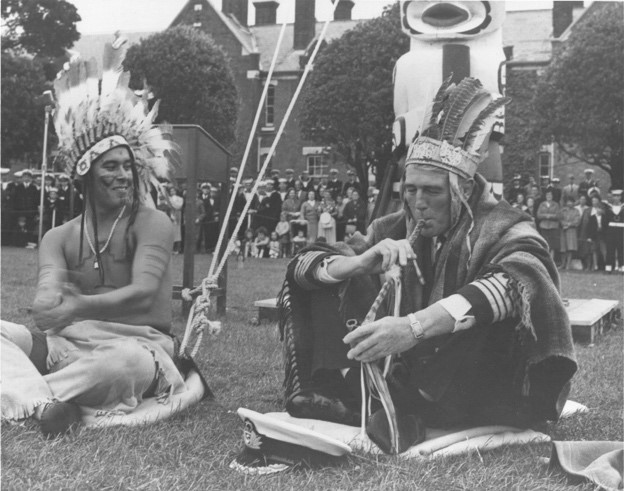
Where is Hosaqami now?
Hosaqami no longer resides in Portsmouth, England. The HMS Excellent was closed in 1985 and the totem pole suffered from rotting and was damaged in a windstorm in 1987. It was taken back to Halifax in 1990 on the HMCS Algonquin. When it arrived, it was sent to Esquimalt, BC. Tony Hunt Sr. is the grandson of Chief Mungo Martin and is also a well-established carver and artist. He told to Navy that Hosaqami should not be restored and should return to its natural state. It was laid behind the memorial wall in front of the Chiefs and Petty Officers Mess at CFB Esquimalt. In 2012 it was sent to Government House in Victoria BC where a new Hosaqami was carved by Chief Tony Hunt Sr. The original “Hosaquami is returning to nature in a place of honor at Government House” (Bill Shead).
